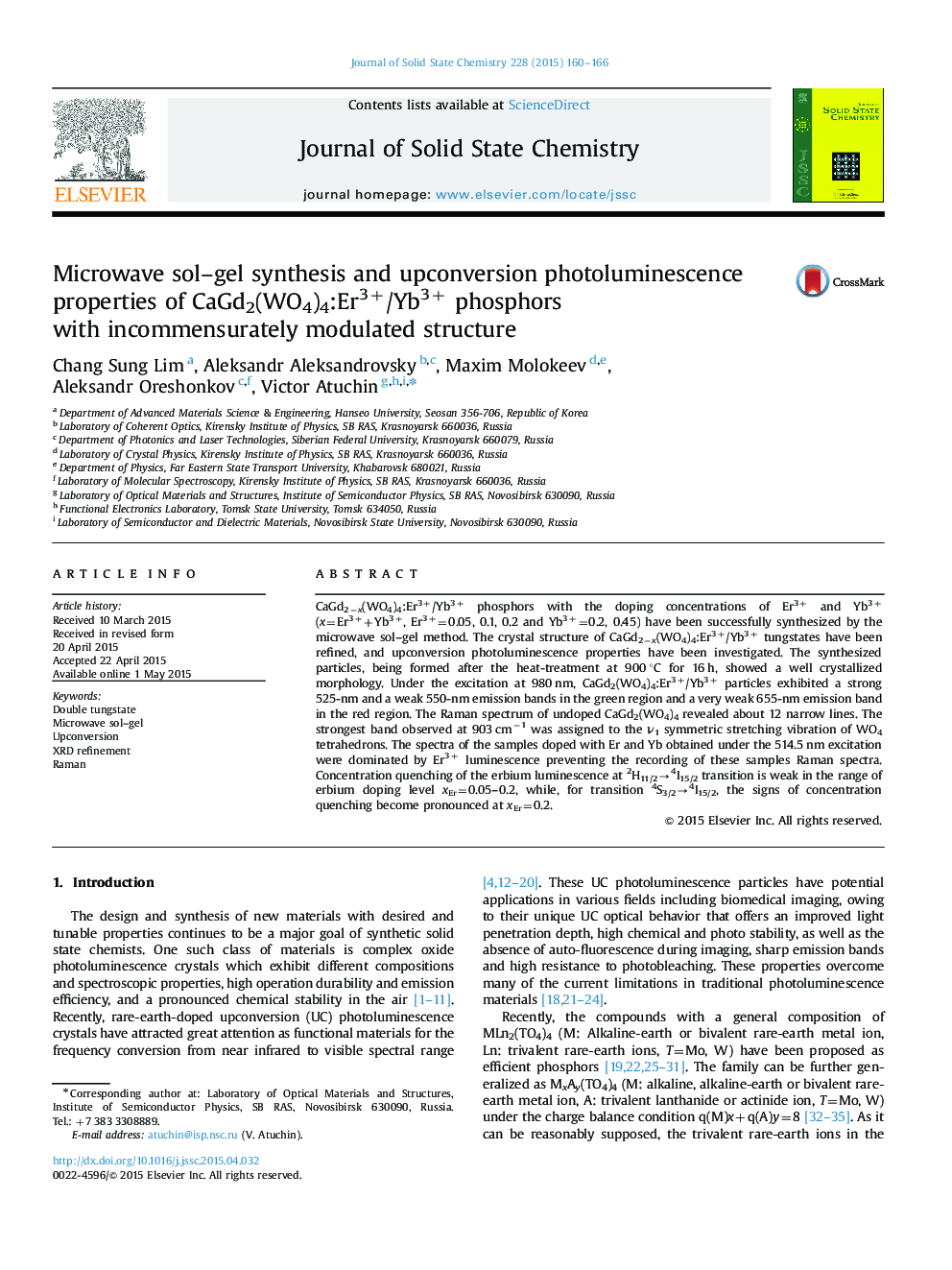| Article ID | Journal | Published Year | Pages | File Type |
|---|---|---|---|---|
| 1331502 | Journal of Solid State Chemistry | 2015 | 7 Pages |
•CaGd2−x(WO4)4:Er3+/Yb3+ phosphors have been synthesized by the microwave sol–gel method.•The crystal structure of CaGd2−x(WO4)4:Er3+/Yb3+ tungstates have been refined.•The upconversion photoluminescence properties have been investigated.
CaGd2−x(WO4)4:Er3+/Yb3+ phosphors with the doping concentrations of Er3+ and Yb3+ (x=Er3++Yb3+, Er3+=0.05, 0.1, 0.2 and Yb3+=0.2, 0.45) have been successfully synthesized by the microwave sol–gel method. The crystal structure of CaGd2−x(WO4)4:Er3+/Yb3+ tungstates have been refined, and upconversion photoluminescence properties have been investigated. The synthesized particles, being formed after the heat-treatment at 900 °C for 16 h, showed a well crystallized morphology. Under the excitation at 980 nm, CaGd2(WO4)4:Er3+/Yb3+ particles exhibited a strong 525-nm and a weak 550-nm emission bands in the green region and a very weak 655-nm emission band in the red region. The Raman spectrum of undoped CaGd2(WO4)4 revealed about 12 narrow lines. The strongest band observed at 903 cm−1 was assigned to the ν1 symmetric stretching vibration of WO4 tetrahedrons. The spectra of the samples doped with Er and Yb obtained under the 514.5 nm excitation were dominated by Er3+ luminescence preventing the recording of these samples Raman spectra. Concentration quenching of the erbium luminescence at 2H11/2→4I15/2 transition is weak in the range of erbium doping level xEr=0.05–0.2, while, for transition 4S3/2→4I15/2, the signs of concentration quenching become pronounced at xEr=0.2.
Graphical abstractCaGd2−x(WO4)4:Er3+/Yb3+ phosphors with the doping concentrations of Er3+ and Yb3+ (x=Er3++Yb3+, Er3+=0.05, 0.1, 0.2 and Yb3+=0.2, 0.45) have been successfully synthesized by the microwave sol–gel method and the crystal structure refinement, and upconversion photoluminescence properties have been investigated. Figure optionsDownload full-size imageDownload as PowerPoint slide
